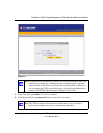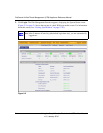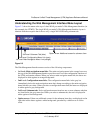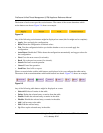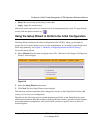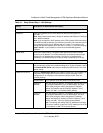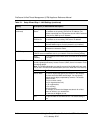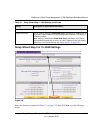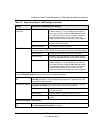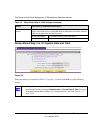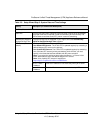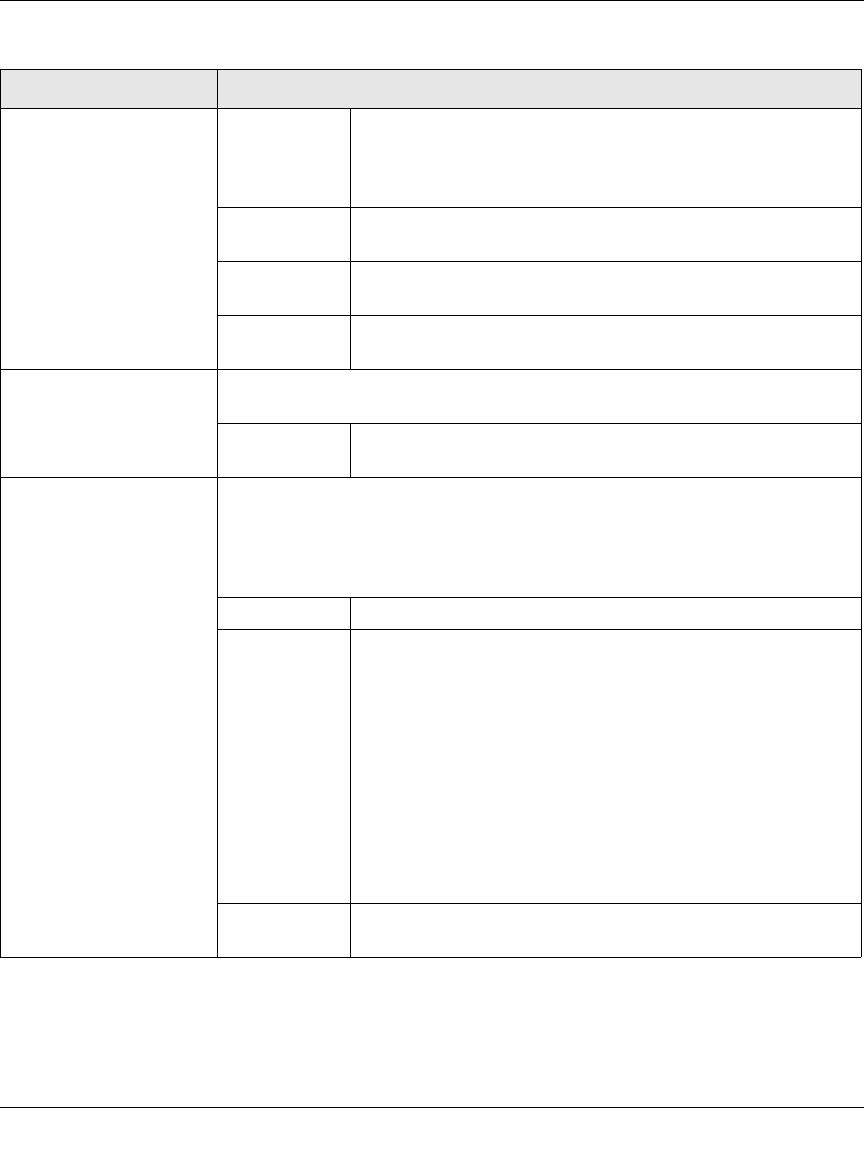
ProSecure Unified Threat Management (UTM) Appliance Reference Manual
2-10 Using the Setup Wizard to Provision the UTM in Your Network
v1.0, January 2010
Enable DHCP Server
(continued)
Primary DNS
Server
This is optional. If an IP address is specified, the UTM provides
this address as the primary DNS server IP address. If no
address is specified, the UTM provides its own LAN IP address
as the primary DNS server IP address.
Secondary
DNS Server
This is optional. If an IP address is specified, the UTM provides
this address as the secondary DNS server IP address.
WINS Server This is optional. Enter a WINS server IP address to specify the
Windows NetBios server, if one is present in your network.
Lease Time Enter a lease time. This specifies the duration for which IP
addresses are leased to clients.
DHCP Relay Select the DHCP Relay radio button to use the UTM as a DHCP relay agent for
a DHCP server somewhere else on your network. Enter the following setting:
Relay
Gateway
The IP address of the DHCP server for which the UTM serves
as a relay.
Enable LDAP information Select the Enable LDAP information checkbox to enable the DHCP server to
provide Lightweight Directory Access Protocol (LDAP) server information. Enter
the settings below.
Note: The LDAP settings that you specify as part of the VLAN profile are used
only for SSL VPN and UTM authentication, but not for Web and e-mail security.
LDAP Server The IP address or name of the LDAP server.
Search Base The search objects that specify the location in the directory
tree from which the LDAP search begin. You can specify
multiple search object, separated by commas. The search
objects include:
• cn (for common name)
• ou (for organizational unit)
• o (for organization)
• c (for country)
• dc (for domain)
For example, to search the Netgear.net domain for all last
names of Johnson, you would enter:
cn=Johnson,dc=Netgear,dc=net
port The port number for the LDAP server. The default setting is
zero.
Table 2-1. Setup Wizard Step 1: LAN Settings (continued)
Setting Description (or Subfield and Description)




